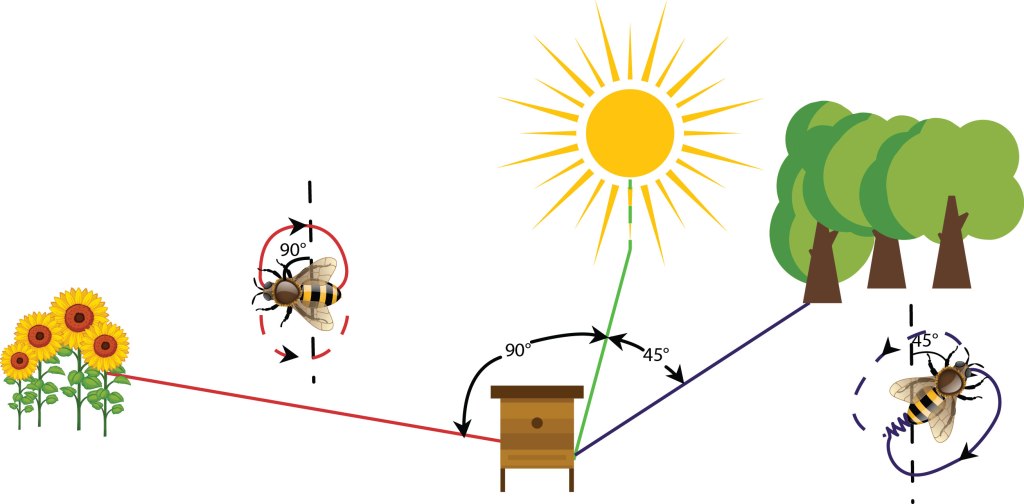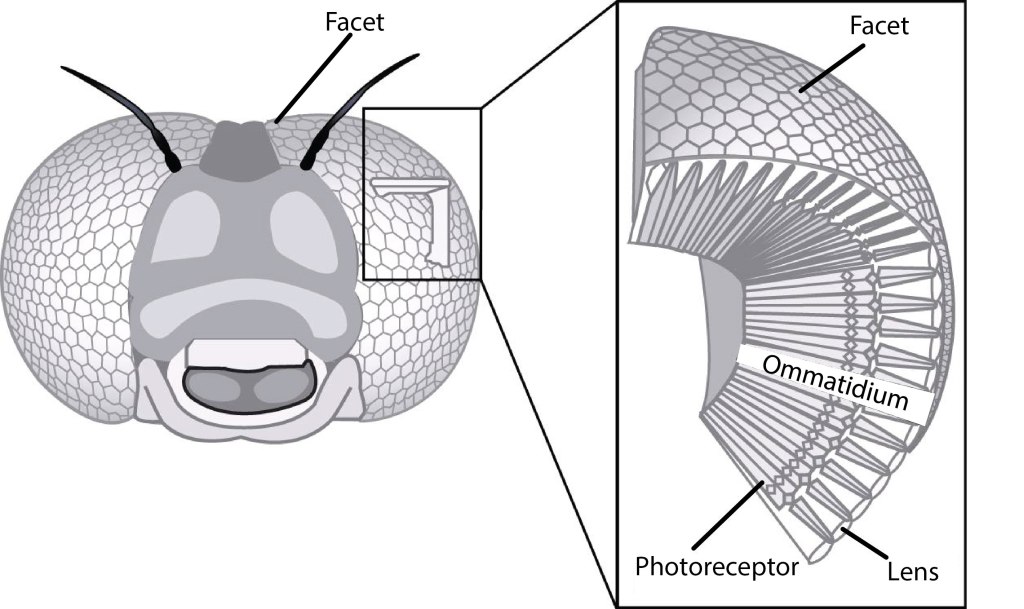The art of communication for our bees
There are currently around 20,000 species of bees. Among them are the species of the genus Apis, which produce the honey that we consume.
Bees are eusocial insects, that they are individuals of the same species living together but organized in different castes. In honeybees (Apis mellifera), there are four castes: the fertile queen, the princesses, drone, and sterile working females who constitute most of the colony’s population. The workers keep the hive clean, build the wax combs, care for the young and look for food.
Illutrations of the three adult castes in honeybees. (Alemayehu Gela Bayeta.
Molecular Analysis during the embryo development of honeybees. Lambert. 2014)
Among the workers are foragers and scouts. The scouts are foragers who have made a communication action with the other bees in order to indicate to them sources of food. Indeed, they will communicate to the foragers the information necessary for them to find the food themselves. For this, the Girl Scouts can send information on the smell of the food, the direction and the distance to be traveled.
By what means are they transmitted?
Their language was initially described by the ethologist Karl von Frisch during his work on honeybees which earned him the prize for physiology in 1973. For this mode of communication, we find two types of dance. When the food source is less than 75 meters away, the bee performs a round dance. And if the food source is more than 75 meters away, the bee dances in eight. In the round dance, a bee makes rapid circular movements and each one begins with a brief agitation of the abdomen. The dancer suddenly stops in the middle of the circle and reverses its direction to make the same circle in the opposite direction before trying again. The round dance may seem different from the eight-dance due to the lack of linear wagging (zigzag line of the dance). It’s simply a shorter version of it. The researchers concluded that there is only one type of dance among honeybees, eight-shaped dancing. In this one, the bees will vary the inclination of their course in a straight line according to the angle of the surface of the ray of the sun passing through the hive and the source of food. The repetition speed of this dance indicates the distance to travel to the food.
Diagram of the dance of the bees. Left, dance in circle for food within 75 meters.
On right the waggle dance for food at more than 75 meters.
Diagram of the orientation of the waggle dance by the scout according to the sun and the food source
How is the distance measured?
It is measured by the movements of the images received by the bee’s eyes during the flight. Like all insects, bees have compound eyes. Faceted eyes are made up of ommatidia, light-sensitive receptors. There can be thousands in one eye. This type of eye is a highly effective motion detector. In the case of our bees, their eyes therefore react more easily to flowers blown by the wind than motionless flowers.
Diagram of the compound eyes in an arthropod (a bee). Reference : Passion entomologie
In addition, honeybees can also see ultraviolet rays, we find on flowers ultraviolet plates allowing bees to orient themselves towards nectar and thus facilitate the pollination of plants.
Photograph of a yellow iris (Iris pseudacorus) in the visible (left) and in ultraviolet (right). Reference : http//www.imagingtheinvisible.com/photo_15635255.html
The Girl Scout Dance is performed in 2D. During this one, we will find spectators and followers. Their behavior can be broken down into several stages. The bees ready to follow detect and locate the dancer. In a second step, they often accompany him several times in his repetitions of movements. Finally, after having followed several cycles, some may fly outside the hive and find the indicated food source.
In 60% of cases, during these movements, we find contact between the antennae of the follower and the dancer. This makes it possible to pick up different signals such as the increase in the temperature of the dancer or the pollen coming from the flower.
In addition to these dances, smell and contact of the antennas, there may be air flows and vibrations of the comb (hairiness at the legs) generated by the dancer to attract other bees. A 2005 study by J. R. Riley et al shows that most foragers do not reach their intended food source without the use of scent and visual cues in the later stages of flight. In addition, during this flight, the information obtained during the dance may ultimately be ignored, the bee preferring to return to a place it remembers. Please note that this situation has been demonstrated in temperate environments, while it would not be efficient in tropical environments. It has also been established that the “beginner” bee will more follow the indications of the dance until it acquires its own experience: it will then be more able to ignore it or to confirm its own memory. of location.
Since most bee species in the wild are solitary, social behavior like these dances is not often observable. However, we find in the wild species with forms of recruitment of their congeneric for foraging, such as the species of the genus Bombini (bumblebees) and Meliponini (stingless bees). Both do not communicate on the location, but on the available food resources and their flavors. Behavior adapted to increase the probability of finding food for the nest.
References :
1. Alemayehu Gela Bayeta. Molecular Analysis during the embryo development of honeybees. Lambert. 2014.
2. A. Dornhaus. Evolutionary origins of bee dances. Nature 1999.
3. De Mark L. Winston. The Biology of The Honey Bee. Harvard University Press. 1991.
4. James L. Goud. Honey bee communication. Nature. 1974.
5. J. R. Riley et al. The flight paths of honeybees recruited by the waggle dance. Nature. 435. 2005.
6. K. Rohrseitz & J. Tautz. Honey bee dance communication: waggle run direction coded in antennal contacts? Journal of Comparative Physiology. 1999.
7. M. J. Couvillon. The dance legacy of Karl von Frish. Insectes Sociaux. 2012.
8. https://passion-entomologie.fr/yeux-composes-insectes-anatomie-structure/
Comment ( 0 ) :
Subscribe to our newsletter
We post content regularly, stay up to date by subscribing to our newsletter.




